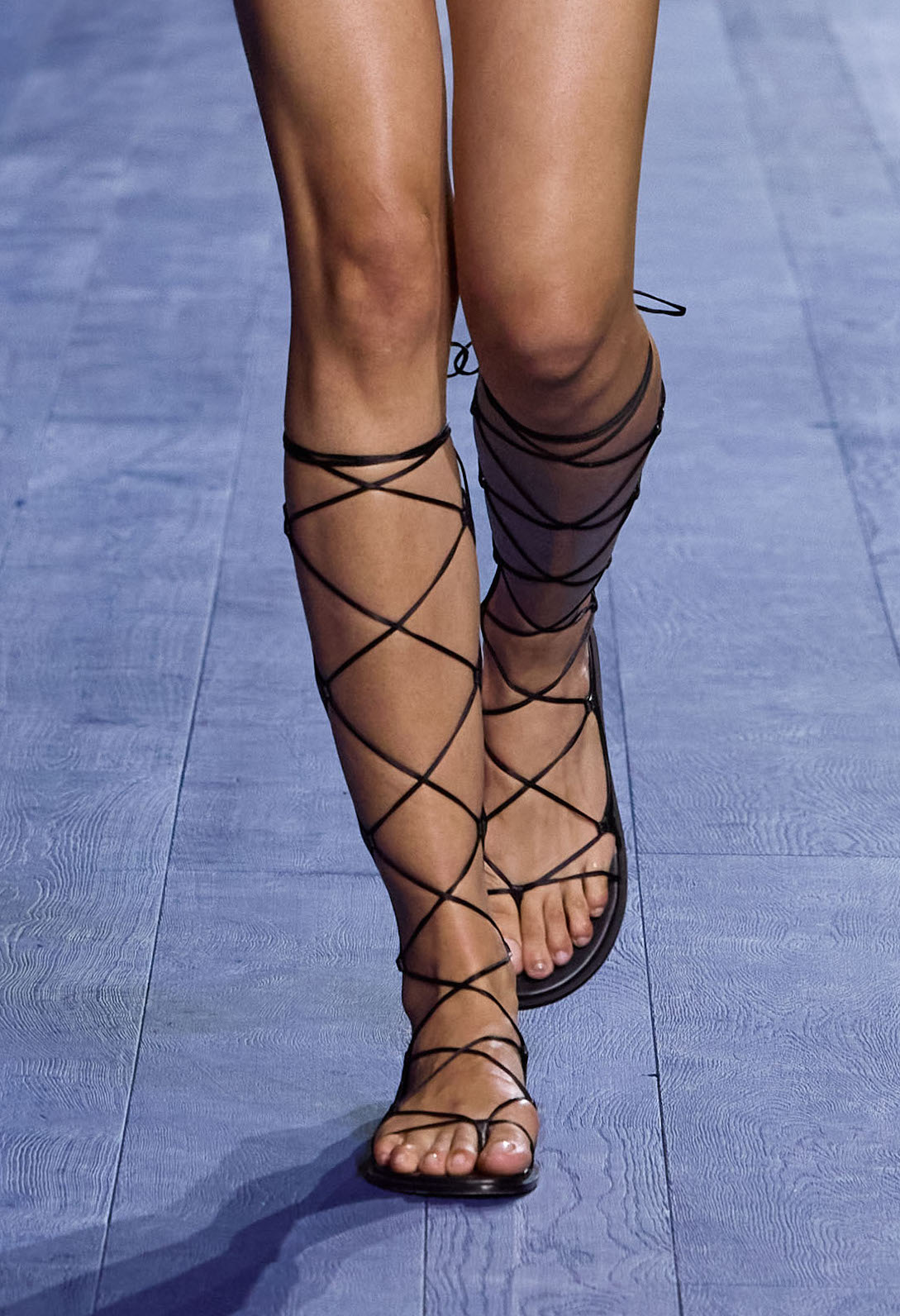The eve of the Paris Olympics, a sacred incarnation of competition, has prompted Maria Grazia Chiuri for this new Haute Couture collection to pay a well-deserved homage to all the athletes who, from antiquity to today, have overcome prejudices and obstacles to ensure equal conditions in sports competitions. Dior thus returns to the primary and fundamental essence of the dress, a theme always very dear to Chiuri. The peplos, flexible and absolute, accompanies a material that does not belong to the world of couture: jersey, here presented as metallic mesh in gold, silver, and white, which caresses the silhouette and embraces the forms, with the help of an ultra-lightweight internal bustier that structures the dresses. The pleats, which return in many pieces of this collection, are sewn or opened to accompany the movement. The drapery, a visual reference to classical statuary, is prevalent on the runway in silk dresses enlarged by embroidery, in moiré jacquard skirts transformed by time, in ensembles where the draped skirt reveals a pair of trousers with each step, and in goddess dresses that, hanging on one shoulder, reveal transparent metallic tank tops edged with satin. A sports t-shirt is adorned with gold leaves and micro-sequins. Red, a vital color according to Christian Dior, sublimates the show; the bathrobe, embellished with mosaic mirrors, chooses to disobey its function: for Maria Grazia Chiuri, this fashion show represents an extraordinary opportunity to combine couture and sportswear with classicism, rebellion, collective energy, and, above all, the political value of the female body. This allows the Maison to affirm the power – experimental, but above all reflective – of Haute Couture’s action and its virtuosity in rethinking the charm, the elegance of a feminine individual who is at once delicate and strong.

“I do not want to build something around the body; I want to liberate it”.
In ancient Greece, sport and athletics were an integral part of education. The prevailing philosophy held that a healthy body was essential for citizens to effectively fulfill their civic duties. Within this educational framework, even girls were encouraged to engage in physical activities. The athletic clothing for women was a draped garment that fell above the knee, leaving one shoulder free.
Among the evocative spaces of the Musée Rodin in Paris, where the walls have been adorned for the occasion with glass tiles and embroideries by artist Faith Ringgold – a pioneer in the use of fabric as an art form and an international feminist – the audience witnesses a fashion show of long white peplos, cinched at the waist with belts. The scene is interspersed with black tunics, gym suits, bodysuits, tank tops, costumes decorated with feathers and lace, and embellished with metallic details and golden inserts; the pieces oscillate between regality and transparency, between materiality and tender softness. The sandals tie at the calf. The bracelets fall loosely on the wrists. To the idealization and constriction of the female body, Chiuri opposes fluidity and liberation; it is no coincidence that her first collection for Dior was dedicated to fencing. The pantsuits in white moiré and black velvet with a peplos suspended at the waist of the trousers capture much of that relaxed yet nymph-like atmosphere, as does a daytime dress in pure black silk cady with a hand-scalloped bib. But it is the evening dresses that lead this journey: an asymmetrical dress in hand-pleated gold lamé suspended from a leather strap illuminates the entire collection. The finale features a long tunic with an asymmetrical panel micro-quilted in black metallic mesh and a draped evening gown supported by a gold metallic jersey necklace.

“For me the most important thing in life is inspiration. I want to inspire others and I want to feel inspired”.













